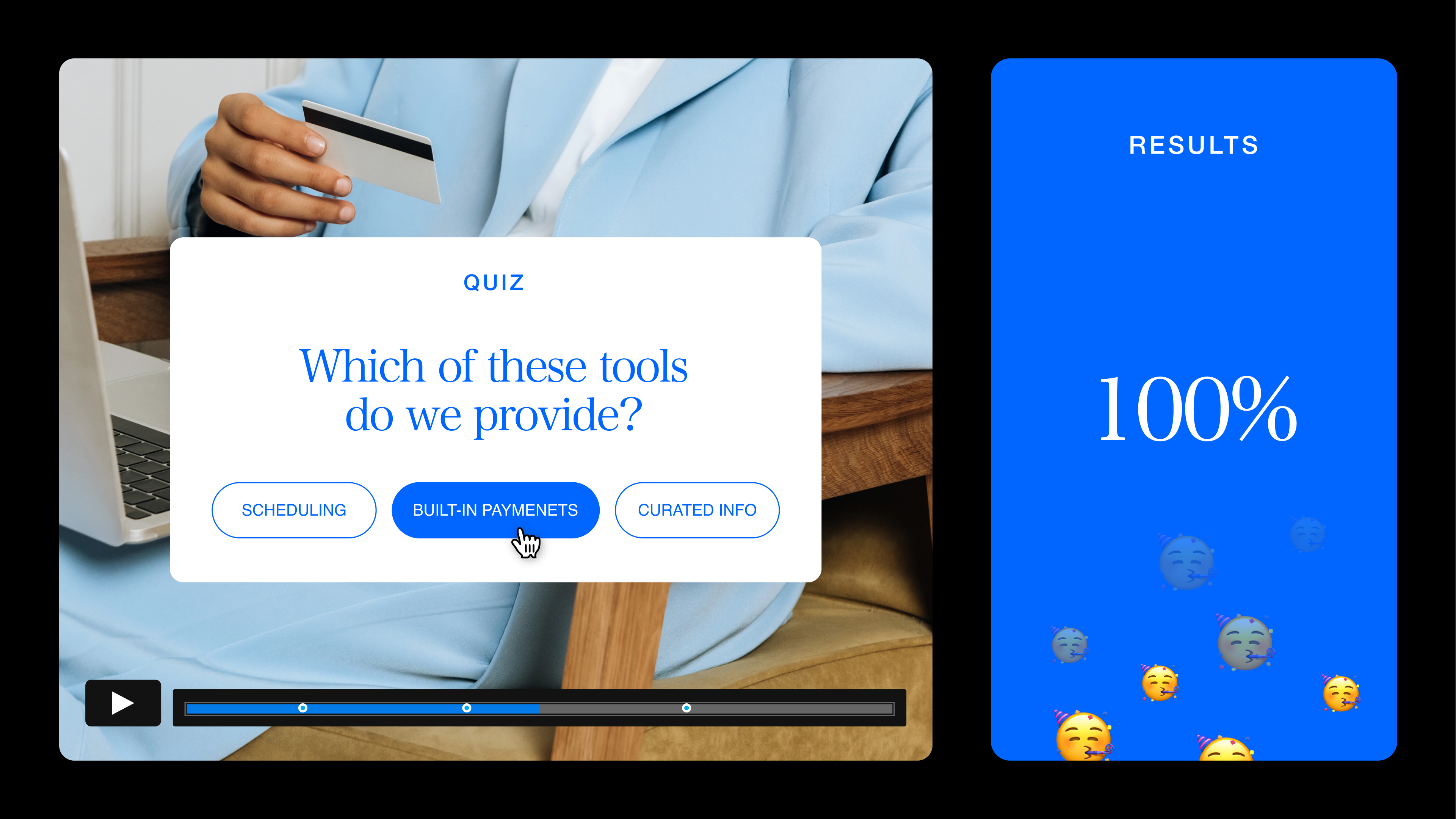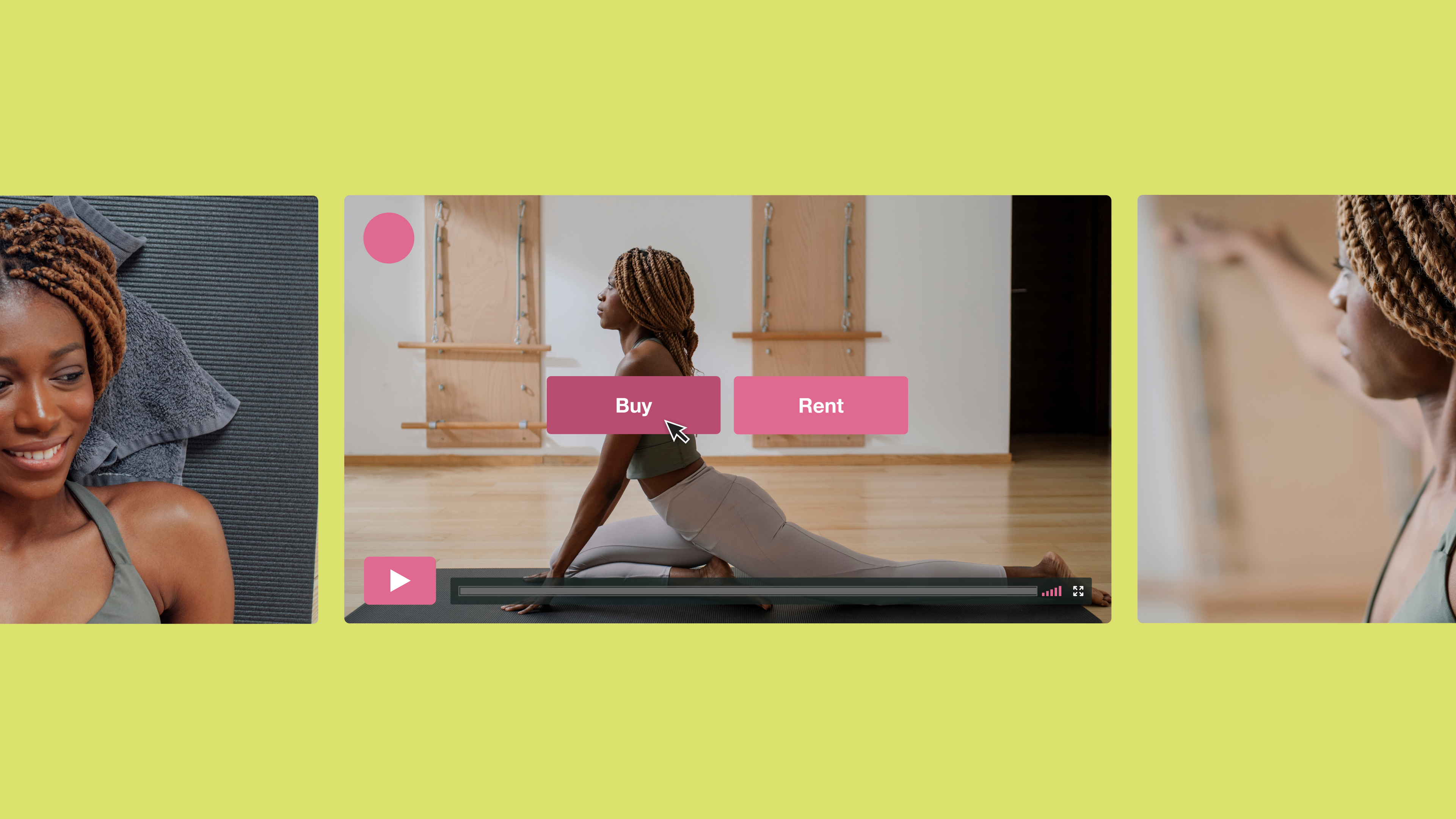Software demo videos are powerful tools. Sales reps can use these videos to introduce your product or service, giving potential customers the chance to engage with your offering first-hand. A good demo video goes beyond ad copy and feature lists to set what you’re making apart from the competition.
In this guide, we’ve compiled a list of eight brands that cracked the code for video demos, and will explain what’s made them succeed. Then, follow the step-by-step guide to producing impactful demo videos your target audience will learn from — and have fun while they do it.
What’s a software demo video?
A software demonstration video is a guided tour of your product in action. Instead of telling people what your software does and why it’s important, a software demo shows them exactly how it can improve their daily lives as they’d use it.
A well-made demo has the power to clarify big questions and convert potential customers into sales. Companies producing software often use demo videos to showcase how their offering’s features, workflows, and integrations are different from other similar products and services.
Upload your demo video to Vimeo →
8 demo video examples for inspiration
Here are eight examples of software companies whose demo videos have captivated audiences, whether they're using walkthroughs or showcasing the best features.
1. Slack
Slack is a messaging app designed to make sharing ideas, files, and information as seamless as possible. Teams can message one-on-one or participate in cross-department channels and group calls for efficient communication.
In its product demo video, Slack illustrates the practical mechanics of how the software saves time and leads to a less chaotic workplace. By using team messaging, file sharing, and other organizational tools in a real-time mock office setting, the product demonstration makes it clear how Slack can reduce potential seas of email threads and strengthen team focus.
Connect Vimeo and Slack →
2. HubSpot
HubSpot is one of the world’s leading customer relationship management (CRM) platforms. It helps brands manage sales, marketing, and customer service under one interface.
With all of its features and benefits, it can be quite difficult to explain all that HubSpot does. Rather than walking through every feature, HubSpot's product demo leads viewers through a realistic marketing campaign from start to finish. You see firsthand how someone would discover your business, engage with your content, and eventually become a customer.
The genius in this demo comes from how the team showcases connections between different HubSpot tools. It’s not uncommon for marketing platforms to feel disjointed, but HubSpot's demo makes everything appear integrated and logical.
Connect Vimeo and HubSpot →
3. Zoom
Zoom is the current leader in video conferencing. It’s a simple video conferencing platform that supports meetings and webinars for just about every purpose around the world.
Zoom's product demonstration is less of a technical guide, instead focusing on the features and stability that put Zoom on the map. The webinar runs through workplace scenarios, from last-minute meetings to team syncs and presentations, but its value comes from the fact that Zoom’s sales team doesn’t shy away from flaws. It nails how to problem-solve the worst-case scenarios of meeting experiences we’ve all faced, like choppy audio, frozen screens, and crashing connections, making the problems seem smaller.
Connect Vimeo and Zoom →
4. Salesforce
Salesforce is another leading CRM platform that makes it easy to manage a sales pipeline with a large number of customers.
This CRM has a full playlist of demo videos exploring its major features. In one video, Salesforce tackles a complex sales process to emphasize how its system streamlines each step, from collaborating with the team to follow up on leads to onboarding a new customer. Because the Salesforce team is intimately familiar with the problems its audience needs to solve, these well-curated demo videos emphasize sales points that are problems in the field.
Connect Vimeo and Salesforce →
5. Asana
Asana is a project management platform that uses AI to streamline and manage team workflows.
The Asana demo immediately focuses on how chaotic workplaces can be. Then, it centers messaging around how the software brings order to chaos, leaning on familiar project scenarios that most potential customers can relate to their own use cases. Like Zoom, Asana doesn’t shy away from the inherent messiness of project management, but shares how the platform uses organization to simplify problem-solving.
Connect Vimeo and Asana →
6. Figma
Figma is a highly collaborative design workspace, where team members can collaborate on and review anything from web design to a book cover.
Working with multiple team members on one platform could introduce new errors or technical difficulties that slow progress. Yet, Figma’s demo library walks through how several team members work together on a design in real time. Each video covers the software from a different perspective, like how designers can use Dev Mode. The secret to its success? The Figma sales team clearly illustrates its ease of use without talking down to viewers.
Connect Vimeo and Figma →
7. Monday.com
Monday.com is a work management platform that helps teams stay organized, track tasks, and collaborate. Like Asana, it’s an AI-forward, but its differentiating use of color and visual workflows makes it customizable and engaging.
Monday.com’s product demo leans into this fun. The team isn’t afraid to use bright, bold colors and throw animations in throughout. The entire video is friendly and highly approachable, which helps viewer engagement (and gives them more time to sell their carefully designed feature set).
8. Loom
Loom is a video messaging software that records your screen to create short videos, so you can explain concepts and share ideas quickly. For example, if there’s a bug in a company tool that the developers can’t replicate, a team member can record a quick Loom video to show what’s going on, then send the video to the developer to make its resolution easier.
Loom's demo is brilliant in its simplicity. The team just showcases how Loom works on their own screen and how quickly it can improve communication. By mirroring the same simplicity that makes Loom unique, the product demo feels authentic and immediately demonstrates the product’s value.
Make a demo video with Vimeo’s video editor →
How to make a demo video in 4 steps
Once you decide how to tailor your product demo video to your product’s strengths and audience’s needs, it’s time to make a video. There are four steps you should consider when putting together a product demonstration.
1. Write a script that solves real problems
Begin by pinpointing specific pain points your target audience faces, then develop a script that solves them. The most effective demos generally introduce a problem, demonstrate a solution, and explain how the product created the positive outcome.
In all likelihood, your product demo script should read more casual than technical. Lean on conversational language and explain why each feature will help users accomplish their goals in different use cases.
Like Figma, consider creating different versions of your product demo for different audiences. What resonates with a development team won't necessarily work for an executive who cares more about business impact than implementation details. In these cases, you can write a generic script template and personalize it for each recording.
2. Record with purpose
When it’s time to record, close distracting applications and practice your script a few times. Move deliberately through your interface. Don’t be afraid to pause or slow down while you’re recording, either. Viewers need time to process what they're seeing. Then, once you’re feeling confident, use a tool like Vimeo's Screen Recorder to record your demo.
Don’t forget about audio quality in demo recordings, either. Poor audio can make even great demos feel unprofessional. If you can, invest in a quality microphone and record in a quiet space where your voice comes through clearly.
3. Edit for impact, not perfection
People’s attention is their most valuable resource, so users are quick to move on if the video drags. Keep the demo video short: If you have a lot to showcase, create a series of focused demos rather than one marathon video.
Get comfortable with cutting unnecessary footage during editing. If a section doesn't directly support your main narrative or solve a key problem, it probably doesn't belong in your demo.
You can also use Vimeo’s Video Editor to add visual elements that guide attention like arrows, highlights, and callouts, but don't go overboard. Your interface should be the star, not your editing effects.
4. Distribute strategically and measure everything
Before you hit publish, make sure your video has a clear next step. What do you want viewers to do after watching: Sign up for a trial? Schedule a demo call? Whatever you choose, make the call to action obvious and accessible.
Once you’ve posted your video, use analytics to see how people engage with your video. A good video hosting platform lets you see data like what parts viewers are most likely to replay and where they tend to drop off. This information can help you refine future demos by understanding what resonates with your audience.
Maximize your demo video's impact with Vimeo
The technical aspects of demo videos matter, but they shouldn’t be complicated to make or follow. Vimeo’s all-in-one video platform gives you professional-grade tools without the big learning curve.
For larger organizations, Vimeo's Enterprise platform offers advanced analytics and added security features that can help grow your video production across your team. And if you’re running a smaller organization, Vimeo's business tools level the playing field — you can create a demo video that matches the quality of much larger companies at a lower cost.
Good demo videos drive results, but only if people can watch them without technical headaches. Vimeo’s hosting platform handles the infrastructure so you can focus on creating content that converts prospects into customers.






